Matt Rees's Blog
August 6, 2016
7 novels to improve your thriller writing
Read these books for specific ways to improve your thriller writing technique
Writers will give you lots of rules for thriller writing. The main ones are usually:
• Start with action
• Heap trouble on your hero
• Foreshadow something early that’s mysterious; reveal the truth about it near the end
• Have the clock tick down to a disaster which only the hero can stop
Thriller writers and other writers
But let's go beyond those basics to the actual style in which you write. This list includes writers whose work will help develop specific stylistic techniques for your writing whether you write crime thrillers, suspense, action thrillers, psychological thrillers or espionage fiction. These thriller writing examples don't all come from thrillers. Stepping out of the genre can make you look at it anew or from a different angle. It'll also give you thriller writing ideas when you're stuck.
A Place of Greater Safety – Hilary Mantel
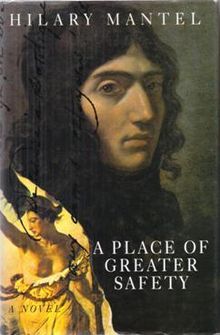 Best known for her historical novels of Tudor England, which include
Wolf Hall
, Mantel’s greatest work is
A Place of Greater Safety
, about three major figures in the French Revolution. Her ability to take a character’s reflective moments and riff on them is unparalleled. In one astonishingly well-written passage, Robespierre, the man usually thought of as the leader of “the Terror” of the guillotine, is at his desk in Paris, beset by political schemes and the pressure of keeping the revolution alive. Mantel shows us how his mind briefly moves nostalgically back to his time as a young lawyer in Normandy, with a memory of a long country walk under dark skies, the tall trees bending in the wind. It’s a moment of such peace, and one to which we can all relate. Where does your mind go when it tries to find shelter from the pressures around you? Take that moment and give it to a character. The result is a fine image, but also a doorway into deepening the character even further.
Best known for her historical novels of Tudor England, which include
Wolf Hall
, Mantel’s greatest work is
A Place of Greater Safety
, about three major figures in the French Revolution. Her ability to take a character’s reflective moments and riff on them is unparalleled. In one astonishingly well-written passage, Robespierre, the man usually thought of as the leader of “the Terror” of the guillotine, is at his desk in Paris, beset by political schemes and the pressure of keeping the revolution alive. Mantel shows us how his mind briefly moves nostalgically back to his time as a young lawyer in Normandy, with a memory of a long country walk under dark skies, the tall trees bending in the wind. It’s a moment of such peace, and one to which we can all relate. Where does your mind go when it tries to find shelter from the pressures around you? Take that moment and give it to a character. The result is a fine image, but also a doorway into deepening the character even further.

Wolves Eat Dogs – Martin Cruz Smith
The hero of Martin Cruz Smith’s wonderful series set in the Soviet Union and, later, Russia (with stops in Cuba, Germany, Alaska, and the Ukrainian backdrop for his Chernobyl novel Wolves Eat Dogs ) is the closest today’s crime fiction gets to Raymond Chandler’s idea that “down these mean streets a man must go who is not himself mean.” In many ways, Cruz Smith is the closest among current crime writers to the keen yet elliptical style of plot development perfected by Chandler. In Chandler’s case, that was, as he admitted, largely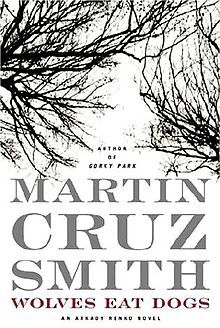 because he didn’t really keep track of the plot. That’s not the issue with Cruz Smith. For him, plot is secondary to the development of his central character. Sometimes I find myself reading one of his novels with intense pleasure and at the same time trying to recall what the plot is about. A key to the central character here is Renko’s voice. His apparently deep disillusion is something of a trick. Renko’s father was a Stalinist general and as an investigator he’s constantly measuring himself against that old bastard––and regretting the similarities he finds. He’s not a drunk like some of his colleagues or corrupt like the others: he’s a hard-edged idealist, like his father, who happens to have inherited the humanity of his mother. Cruz Smith’s Russia is the perfect backdrop for Renko’s tawdry shining armor. After the collapse of the Soviet Union, Cruz Smith has painted the breakdown of society better than any nonfiction or journalism I’ve read. This examination of a real society in crisis through fiction is something I’ve tried to do with my Palestinian crime novels. Look at the crises in your society and, instead of seeing it with the jadedness or anger that might engulf you when you read the newspapers, master it and defuse it––make it into a fictional scenario where you can at least make the bad guys pay.
because he didn’t really keep track of the plot. That’s not the issue with Cruz Smith. For him, plot is secondary to the development of his central character. Sometimes I find myself reading one of his novels with intense pleasure and at the same time trying to recall what the plot is about. A key to the central character here is Renko’s voice. His apparently deep disillusion is something of a trick. Renko’s father was a Stalinist general and as an investigator he’s constantly measuring himself against that old bastard––and regretting the similarities he finds. He’s not a drunk like some of his colleagues or corrupt like the others: he’s a hard-edged idealist, like his father, who happens to have inherited the humanity of his mother. Cruz Smith’s Russia is the perfect backdrop for Renko’s tawdry shining armor. After the collapse of the Soviet Union, Cruz Smith has painted the breakdown of society better than any nonfiction or journalism I’ve read. This examination of a real society in crisis through fiction is something I’ve tried to do with my Palestinian crime novels. Look at the crises in your society and, instead of seeing it with the jadedness or anger that might engulf you when you read the newspapers, master it and defuse it––make it into a fictional scenario where you can at least make the bad guys pay.
Let It Come Down – Paul Bowles
 Writers look for resonance. You might say Bowles has us with his title alone, which resonates with doom even before he writes his first sentence of
Let It Come Down
. (It’s drawn from
MacBeth
. When the murderers sent by MacBeth come upon his friend Banquo, the lord says: “It will be rain tonight.” The murderer lifts his knife and says: “Let it come down.” Then he kills him.) But with this novel about Morocco, as in his more famous Algerian novel
The Sheltering Sky
, Bowles was even more resonant. When writing, he would often travel through North Africa. Each day, he would incorporate something into his writing that had actually happened during the previous day’s journey. Working in the Middle East, I often follow that technique, adding details from yesterday’s stroll through the Muslim Quarter of Jerusalem or a refugee camp in Bethlehem. Try this technique to get some immediacy into your descriptive writing.
Writers look for resonance. You might say Bowles has us with his title alone, which resonates with doom even before he writes his first sentence of
Let It Come Down
. (It’s drawn from
MacBeth
. When the murderers sent by MacBeth come upon his friend Banquo, the lord says: “It will be rain tonight.” The murderer lifts his knife and says: “Let it come down.” Then he kills him.) But with this novel about Morocco, as in his more famous Algerian novel
The Sheltering Sky
, Bowles was even more resonant. When writing, he would often travel through North Africa. Each day, he would incorporate something into his writing that had actually happened during the previous day’s journey. Working in the Middle East, I often follow that technique, adding details from yesterday’s stroll through the Muslim Quarter of Jerusalem or a refugee camp in Bethlehem. Try this technique to get some immediacy into your descriptive writing.
The Long Goodbye – Raymond Chandler
The Long Goodbye is the novel that Chandler labored over longest and thought his best. He was right. It exposes a deep emotional side to his great detective creation Philip Marlowe. Chandler was the greatest stylist of Twentieth Century American fiction (Yes, Hemingway lovers, you read that correctly.) Try this image, when a beautiful woman has just walked into a bar full of men and everyone falls silent to look at her: “It was like just after the conductor taps on his music stand and raises his arms and holds them poised.” Chandler inspires me to make every image in my book as good as that. Of course, I'm still trying...
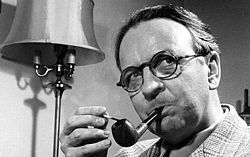
The King Must Die – Mary Renault
 I was heading for Jordan to cover the last days of the ailing King Hussein for The Scotsman in 1999. I happened to pick up a used copy of
The King Must Die
--the title seemed appropriate. But as I waited in a rainy Amman winter for the poor old monarch to die, I discovered that Mary Renault had a capacity to describe the classical world as though she had lived through that era. Her novels are the best portrayal of homosexual love and of the great values of Greece in literature anywhere. She takes a contemporary facet of existence (homosexuality or simply sexuality) and imagines it into a character from another time. In doing so, she gives us a perspective on that facet that’s hard for us to notice with such clarity when it’s in a contemporary context. It’s one of the reasons I love historical fiction and historical thrillers. Try taking what you want to write about and superimposing it on characters from another age––it can sharpen the edges of what you want to say. You can do the same thing with genre. Take a story that’s often treated in romance fiction or sci-fi and turn it into a thriller; you’ll find compelling new angles.
I was heading for Jordan to cover the last days of the ailing King Hussein for The Scotsman in 1999. I happened to pick up a used copy of
The King Must Die
--the title seemed appropriate. But as I waited in a rainy Amman winter for the poor old monarch to die, I discovered that Mary Renault had a capacity to describe the classical world as though she had lived through that era. Her novels are the best portrayal of homosexual love and of the great values of Greece in literature anywhere. She takes a contemporary facet of existence (homosexuality or simply sexuality) and imagines it into a character from another time. In doing so, she gives us a perspective on that facet that’s hard for us to notice with such clarity when it’s in a contemporary context. It’s one of the reasons I love historical fiction and historical thrillers. Try taking what you want to write about and superimposing it on characters from another age––it can sharpen the edges of what you want to say. You can do the same thing with genre. Take a story that’s often treated in romance fiction or sci-fi and turn it into a thriller; you’ll find compelling new angles.
The Cold Six Thousand – James Ellroy
 I love to see real characters from Hollywood and DC turn up in James Ellroy’s hardboiled poetic fiction. The story of CIA/FBI renegades in
The Cold Six Thousand
in the aftermath of the Kennedy assassination is perfect. I saw him read first when
American Tabloid
, the first in the trilogy of which Six Thousand is the second, was published. He blew me away. Try switching your language to a totally different syntax. It’ll either be a discovery, or when you revert to your more natural style you’ll see it more clearly and have a few new tricks to throw in. If you can find a better opening paragraph to a chapter than this one, let me know: “Heat. Bugs. Bullshit.” Dig it.
I love to see real characters from Hollywood and DC turn up in James Ellroy’s hardboiled poetic fiction. The story of CIA/FBI renegades in
The Cold Six Thousand
in the aftermath of the Kennedy assassination is perfect. I saw him read first when
American Tabloid
, the first in the trilogy of which Six Thousand is the second, was published. He blew me away. Try switching your language to a totally different syntax. It’ll either be a discovery, or when you revert to your more natural style you’ll see it more clearly and have a few new tricks to throw in. If you can find a better opening paragraph to a chapter than this one, let me know: “Heat. Bugs. Bullshit.” Dig it.
The Power and the Glory – Graham Greene
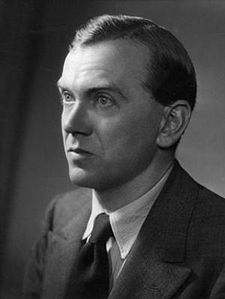 Greene went to Mexico to research a travel book, but he showed that journalistic research can turn into literature of great spirituality with this story of a drunken priest on the run. I try to remember that as I flick through my old reporter's notebooks for new ideas for my novels. Greene's is such a powerful examination of the loss of belief that it captivates even a non-Catholic, non-believer like me. The scene in
The Power and the Glory
where the desperate, drunken priest steals a hunk of meat from a stray dog is astonishing in its, well, power and not glory. The priest starts to beat the dog: “She just had to endure, her eyes yellow and scared and malevolent shining back at him between the blows.” Like Mexico under dictatorship. Like the priest before a disapproving God. Take a moment where you’ve experienced people or places that were different from you and roll them over in your head until a story comes out. That’s what Greene did.
Greene went to Mexico to research a travel book, but he showed that journalistic research can turn into literature of great spirituality with this story of a drunken priest on the run. I try to remember that as I flick through my old reporter's notebooks for new ideas for my novels. Greene's is such a powerful examination of the loss of belief that it captivates even a non-Catholic, non-believer like me. The scene in
The Power and the Glory
where the desperate, drunken priest steals a hunk of meat from a stray dog is astonishing in its, well, power and not glory. The priest starts to beat the dog: “She just had to endure, her eyes yellow and scared and malevolent shining back at him between the blows.” Like Mexico under dictatorship. Like the priest before a disapproving God. Take a moment where you’ve experienced people or places that were different from you and roll them over in your head until a story comes out. That’s what Greene did.

Writers will give you lots of rules for thriller writing. The main ones are usually:
• Start with action
• Heap trouble on your hero
• Foreshadow something early that’s mysterious; reveal the truth about it near the end
• Have the clock tick down to a disaster which only the hero can stop
Thriller writers and other writers
But let's go beyond those basics to the actual style in which you write. This list includes writers whose work will help develop specific stylistic techniques for your writing whether you write crime thrillers, suspense, action thrillers, psychological thrillers or espionage fiction. These thriller writing examples don't all come from thrillers. Stepping out of the genre can make you look at it anew or from a different angle. It'll also give you thriller writing ideas when you're stuck.
A Place of Greater Safety – Hilary Mantel
 Best known for her historical novels of Tudor England, which include
Wolf Hall
, Mantel’s greatest work is
A Place of Greater Safety
, about three major figures in the French Revolution. Her ability to take a character’s reflective moments and riff on them is unparalleled. In one astonishingly well-written passage, Robespierre, the man usually thought of as the leader of “the Terror” of the guillotine, is at his desk in Paris, beset by political schemes and the pressure of keeping the revolution alive. Mantel shows us how his mind briefly moves nostalgically back to his time as a young lawyer in Normandy, with a memory of a long country walk under dark skies, the tall trees bending in the wind. It’s a moment of such peace, and one to which we can all relate. Where does your mind go when it tries to find shelter from the pressures around you? Take that moment and give it to a character. The result is a fine image, but also a doorway into deepening the character even further.
Best known for her historical novels of Tudor England, which include
Wolf Hall
, Mantel’s greatest work is
A Place of Greater Safety
, about three major figures in the French Revolution. Her ability to take a character’s reflective moments and riff on them is unparalleled. In one astonishingly well-written passage, Robespierre, the man usually thought of as the leader of “the Terror” of the guillotine, is at his desk in Paris, beset by political schemes and the pressure of keeping the revolution alive. Mantel shows us how his mind briefly moves nostalgically back to his time as a young lawyer in Normandy, with a memory of a long country walk under dark skies, the tall trees bending in the wind. It’s a moment of such peace, and one to which we can all relate. Where does your mind go when it tries to find shelter from the pressures around you? Take that moment and give it to a character. The result is a fine image, but also a doorway into deepening the character even further.
Wolves Eat Dogs – Martin Cruz Smith
The hero of Martin Cruz Smith’s wonderful series set in the Soviet Union and, later, Russia (with stops in Cuba, Germany, Alaska, and the Ukrainian backdrop for his Chernobyl novel Wolves Eat Dogs ) is the closest today’s crime fiction gets to Raymond Chandler’s idea that “down these mean streets a man must go who is not himself mean.” In many ways, Cruz Smith is the closest among current crime writers to the keen yet elliptical style of plot development perfected by Chandler. In Chandler’s case, that was, as he admitted, largely
 because he didn’t really keep track of the plot. That’s not the issue with Cruz Smith. For him, plot is secondary to the development of his central character. Sometimes I find myself reading one of his novels with intense pleasure and at the same time trying to recall what the plot is about. A key to the central character here is Renko’s voice. His apparently deep disillusion is something of a trick. Renko’s father was a Stalinist general and as an investigator he’s constantly measuring himself against that old bastard––and regretting the similarities he finds. He’s not a drunk like some of his colleagues or corrupt like the others: he’s a hard-edged idealist, like his father, who happens to have inherited the humanity of his mother. Cruz Smith’s Russia is the perfect backdrop for Renko’s tawdry shining armor. After the collapse of the Soviet Union, Cruz Smith has painted the breakdown of society better than any nonfiction or journalism I’ve read. This examination of a real society in crisis through fiction is something I’ve tried to do with my Palestinian crime novels. Look at the crises in your society and, instead of seeing it with the jadedness or anger that might engulf you when you read the newspapers, master it and defuse it––make it into a fictional scenario where you can at least make the bad guys pay.
because he didn’t really keep track of the plot. That’s not the issue with Cruz Smith. For him, plot is secondary to the development of his central character. Sometimes I find myself reading one of his novels with intense pleasure and at the same time trying to recall what the plot is about. A key to the central character here is Renko’s voice. His apparently deep disillusion is something of a trick. Renko’s father was a Stalinist general and as an investigator he’s constantly measuring himself against that old bastard––and regretting the similarities he finds. He’s not a drunk like some of his colleagues or corrupt like the others: he’s a hard-edged idealist, like his father, who happens to have inherited the humanity of his mother. Cruz Smith’s Russia is the perfect backdrop for Renko’s tawdry shining armor. After the collapse of the Soviet Union, Cruz Smith has painted the breakdown of society better than any nonfiction or journalism I’ve read. This examination of a real society in crisis through fiction is something I’ve tried to do with my Palestinian crime novels. Look at the crises in your society and, instead of seeing it with the jadedness or anger that might engulf you when you read the newspapers, master it and defuse it––make it into a fictional scenario where you can at least make the bad guys pay.Let It Come Down – Paul Bowles
 Writers look for resonance. You might say Bowles has us with his title alone, which resonates with doom even before he writes his first sentence of
Let It Come Down
. (It’s drawn from
MacBeth
. When the murderers sent by MacBeth come upon his friend Banquo, the lord says: “It will be rain tonight.” The murderer lifts his knife and says: “Let it come down.” Then he kills him.) But with this novel about Morocco, as in his more famous Algerian novel
The Sheltering Sky
, Bowles was even more resonant. When writing, he would often travel through North Africa. Each day, he would incorporate something into his writing that had actually happened during the previous day’s journey. Working in the Middle East, I often follow that technique, adding details from yesterday’s stroll through the Muslim Quarter of Jerusalem or a refugee camp in Bethlehem. Try this technique to get some immediacy into your descriptive writing.
Writers look for resonance. You might say Bowles has us with his title alone, which resonates with doom even before he writes his first sentence of
Let It Come Down
. (It’s drawn from
MacBeth
. When the murderers sent by MacBeth come upon his friend Banquo, the lord says: “It will be rain tonight.” The murderer lifts his knife and says: “Let it come down.” Then he kills him.) But with this novel about Morocco, as in his more famous Algerian novel
The Sheltering Sky
, Bowles was even more resonant. When writing, he would often travel through North Africa. Each day, he would incorporate something into his writing that had actually happened during the previous day’s journey. Working in the Middle East, I often follow that technique, adding details from yesterday’s stroll through the Muslim Quarter of Jerusalem or a refugee camp in Bethlehem. Try this technique to get some immediacy into your descriptive writing.The Long Goodbye – Raymond Chandler
The Long Goodbye is the novel that Chandler labored over longest and thought his best. He was right. It exposes a deep emotional side to his great detective creation Philip Marlowe. Chandler was the greatest stylist of Twentieth Century American fiction (Yes, Hemingway lovers, you read that correctly.) Try this image, when a beautiful woman has just walked into a bar full of men and everyone falls silent to look at her: “It was like just after the conductor taps on his music stand and raises his arms and holds them poised.” Chandler inspires me to make every image in my book as good as that. Of course, I'm still trying...

The King Must Die – Mary Renault
 I was heading for Jordan to cover the last days of the ailing King Hussein for The Scotsman in 1999. I happened to pick up a used copy of
The King Must Die
--the title seemed appropriate. But as I waited in a rainy Amman winter for the poor old monarch to die, I discovered that Mary Renault had a capacity to describe the classical world as though she had lived through that era. Her novels are the best portrayal of homosexual love and of the great values of Greece in literature anywhere. She takes a contemporary facet of existence (homosexuality or simply sexuality) and imagines it into a character from another time. In doing so, she gives us a perspective on that facet that’s hard for us to notice with such clarity when it’s in a contemporary context. It’s one of the reasons I love historical fiction and historical thrillers. Try taking what you want to write about and superimposing it on characters from another age––it can sharpen the edges of what you want to say. You can do the same thing with genre. Take a story that’s often treated in romance fiction or sci-fi and turn it into a thriller; you’ll find compelling new angles.
I was heading for Jordan to cover the last days of the ailing King Hussein for The Scotsman in 1999. I happened to pick up a used copy of
The King Must Die
--the title seemed appropriate. But as I waited in a rainy Amman winter for the poor old monarch to die, I discovered that Mary Renault had a capacity to describe the classical world as though she had lived through that era. Her novels are the best portrayal of homosexual love and of the great values of Greece in literature anywhere. She takes a contemporary facet of existence (homosexuality or simply sexuality) and imagines it into a character from another time. In doing so, she gives us a perspective on that facet that’s hard for us to notice with such clarity when it’s in a contemporary context. It’s one of the reasons I love historical fiction and historical thrillers. Try taking what you want to write about and superimposing it on characters from another age––it can sharpen the edges of what you want to say. You can do the same thing with genre. Take a story that’s often treated in romance fiction or sci-fi and turn it into a thriller; you’ll find compelling new angles.The Cold Six Thousand – James Ellroy
 I love to see real characters from Hollywood and DC turn up in James Ellroy’s hardboiled poetic fiction. The story of CIA/FBI renegades in
The Cold Six Thousand
in the aftermath of the Kennedy assassination is perfect. I saw him read first when
American Tabloid
, the first in the trilogy of which Six Thousand is the second, was published. He blew me away. Try switching your language to a totally different syntax. It’ll either be a discovery, or when you revert to your more natural style you’ll see it more clearly and have a few new tricks to throw in. If you can find a better opening paragraph to a chapter than this one, let me know: “Heat. Bugs. Bullshit.” Dig it.
I love to see real characters from Hollywood and DC turn up in James Ellroy’s hardboiled poetic fiction. The story of CIA/FBI renegades in
The Cold Six Thousand
in the aftermath of the Kennedy assassination is perfect. I saw him read first when
American Tabloid
, the first in the trilogy of which Six Thousand is the second, was published. He blew me away. Try switching your language to a totally different syntax. It’ll either be a discovery, or when you revert to your more natural style you’ll see it more clearly and have a few new tricks to throw in. If you can find a better opening paragraph to a chapter than this one, let me know: “Heat. Bugs. Bullshit.” Dig it.The Power and the Glory – Graham Greene
 Greene went to Mexico to research a travel book, but he showed that journalistic research can turn into literature of great spirituality with this story of a drunken priest on the run. I try to remember that as I flick through my old reporter's notebooks for new ideas for my novels. Greene's is such a powerful examination of the loss of belief that it captivates even a non-Catholic, non-believer like me. The scene in
The Power and the Glory
where the desperate, drunken priest steals a hunk of meat from a stray dog is astonishing in its, well, power and not glory. The priest starts to beat the dog: “She just had to endure, her eyes yellow and scared and malevolent shining back at him between the blows.” Like Mexico under dictatorship. Like the priest before a disapproving God. Take a moment where you’ve experienced people or places that were different from you and roll them over in your head until a story comes out. That’s what Greene did.
Greene went to Mexico to research a travel book, but he showed that journalistic research can turn into literature of great spirituality with this story of a drunken priest on the run. I try to remember that as I flick through my old reporter's notebooks for new ideas for my novels. Greene's is such a powerful examination of the loss of belief that it captivates even a non-Catholic, non-believer like me. The scene in
The Power and the Glory
where the desperate, drunken priest steals a hunk of meat from a stray dog is astonishing in its, well, power and not glory. The priest starts to beat the dog: “She just had to endure, her eyes yellow and scared and malevolent shining back at him between the blows.” Like Mexico under dictatorship. Like the priest before a disapproving God. Take a moment where you’ve experienced people or places that were different from you and roll them over in your head until a story comes out. That’s what Greene did.
Published on August 06, 2016 12:58
•
Tags:
thrillers, writing-tips
June 28, 2014
Writing a book is like rock'n'roll
The Woodstock Revival Nightmare featuring Matt Rees on "deaf bass"
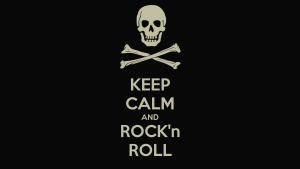 A few years ago I played a Woodstock Revival gig. It didn't go well. In fact, I wrote an entire article about the various live-show nightmares involved. And why you shouldn't care, because it's rock'n'roll. I think it applies to writing too. Just do it. Clean it up later if you like, but while you're doing it just enjoy it and screw what it sounds/reads like. Hemingway said "first drafts are shit." Let's call this a first draft of a Credence song:
A few years ago I played a Woodstock Revival gig. It didn't go well. In fact, I wrote an entire article about the various live-show nightmares involved. And why you shouldn't care, because it's rock'n'roll. I think it applies to writing too. Just do it. Clean it up later if you like, but while you're doing it just enjoy it and screw what it sounds/reads like. Hemingway said "first drafts are shit." Let's call this a first draft of a Credence song:
http://youtu.be/KLIr4PQ1Gsk

 A few years ago I played a Woodstock Revival gig. It didn't go well. In fact, I wrote an entire article about the various live-show nightmares involved. And why you shouldn't care, because it's rock'n'roll. I think it applies to writing too. Just do it. Clean it up later if you like, but while you're doing it just enjoy it and screw what it sounds/reads like. Hemingway said "first drafts are shit." Let's call this a first draft of a Credence song:
A few years ago I played a Woodstock Revival gig. It didn't go well. In fact, I wrote an entire article about the various live-show nightmares involved. And why you shouldn't care, because it's rock'n'roll. I think it applies to writing too. Just do it. Clean it up later if you like, but while you're doing it just enjoy it and screw what it sounds/reads like. Hemingway said "first drafts are shit." Let's call this a first draft of a Credence song:http://youtu.be/KLIr4PQ1Gsk

Published on June 28, 2014 22:50
•
Tags:
alan-bennett, crime-fiction, elmore-leonard, how-to-write, humor, keith-thomson, marcus-aurelius, rock-n-roll, thrillers, write-a-thriller, writing-tips
May 30, 2014
Write a thriller: Make it funny
Comedy is a great way to draw readers to a character
Thriller writers need to make their characters—particularly the hero—appealing to readers. That’s not always easy, because even the hero of a thriller might have to do some unappealing, nasty things to escape the bad guys and save the day. One important tool in the writer’s box is humor.

We like funny guys. Even when their humor is dark. Take Elmore Leonard’s Chili Palmer in “Get Shorty.” An old friend inquires about a mutual acquaintance in Florida:
Reptition of lines can build a character too. In “Get Shorty,” Chili instructs Harry, a movie producer, about how to take control of a conversation with a mobster. “Look at me,” he says. What the mobster is supposed to see is the toughness underlying Chili’s cheerful exterior. The humor comes when Harry uses the line on Ray Barboni, a Miami gangster who believes he’s owed money. Barboni sees Harry's weakness and superficiality--and no toughness. “Look at this,” Ray says to Harry, as he smashes a telephone across his nose.
Elmore Leonard recognized the importance of humor when building his “style” early on. He wrote of Hemingway that “He was my first big influence because he made writing look easy. Then I realized that Hemingway didn’t have much of a sense of humor.”
So Elmore took the apparent simplicity of Hemingway’s style and added what he called “attitude.” That’s where the humor often comes in. Elmore gives his character an “attitude,” which is typically built on speech tics and repeated tropes.
Language that might be considered “stupid cool” is one of Elmore’s techniques for creating attitude. Quentin Tarantino bastardized it, but Elmore never abused it. When one of his characters calls Barboni’s choice of weapon “the fucking Fiat of guns,” it’s funny. But it’s funnier because Barboni immediately shoots the guy dead with the Fiat of guns.
Now that Elmore’s dead, the best place to look for humor in a thriller—particularly humor that adds depth to character—is in the books of Keith Thomson. Thomson’s the new Elmore Leonard.
In “Once a Spy,” the main character, Charlie, is in debt to a loan shark. He needs a favor from a fairly dumb pal. Here’s a bit of their dialogue:
That’s funny. But what makes it even better is to read it with the next line:
Like Elmore Leonard, what Thomson does here is leave the laughing to the reader. The characters are into their discussion on a serious level. They aren’t wisecracking. They aren’t trying to be funny. They ARE funny, because their character is being revealed. But they don’t know it. That’s the trick.
 Get a FREE ebook of my crime stories.
Get a FREE ebook of my crime stories.
Thriller writers need to make their characters—particularly the hero—appealing to readers. That’s not always easy, because even the hero of a thriller might have to do some unappealing, nasty things to escape the bad guys and save the day. One important tool in the writer’s box is humor.

We like funny guys. Even when their humor is dark. Take Elmore Leonard’s Chili Palmer in “Get Shorty.” An old friend inquires about a mutual acquaintance in Florida:
“How is Momo these days?”
“Dead.”
Reptition of lines can build a character too. In “Get Shorty,” Chili instructs Harry, a movie producer, about how to take control of a conversation with a mobster. “Look at me,” he says. What the mobster is supposed to see is the toughness underlying Chili’s cheerful exterior. The humor comes when Harry uses the line on Ray Barboni, a Miami gangster who believes he’s owed money. Barboni sees Harry's weakness and superficiality--and no toughness. “Look at this,” Ray says to Harry, as he smashes a telephone across his nose.
Elmore Leonard recognized the importance of humor when building his “style” early on. He wrote of Hemingway that “He was my first big influence because he made writing look easy. Then I realized that Hemingway didn’t have much of a sense of humor.”
So Elmore took the apparent simplicity of Hemingway’s style and added what he called “attitude.” That’s where the humor often comes in. Elmore gives his character an “attitude,” which is typically built on speech tics and repeated tropes.
Language that might be considered “stupid cool” is one of Elmore’s techniques for creating attitude. Quentin Tarantino bastardized it, but Elmore never abused it. When one of his characters calls Barboni’s choice of weapon “the fucking Fiat of guns,” it’s funny. But it’s funnier because Barboni immediately shoots the guy dead with the Fiat of guns.
Now that Elmore’s dead, the best place to look for humor in a thriller—particularly humor that adds depth to character—is in the books of Keith Thomson. Thomson’s the new Elmore Leonard.
In “Once a Spy,” the main character, Charlie, is in debt to a loan shark. He needs a favor from a fairly dumb pal. Here’s a bit of their dialogue:
“I’m short by north of fifteen. If I don’t have it by tomorrow night, Grudzev’s going to fill a cup with sand.”
“And make you drink it?”
“Why would I care if he’s just filling a cup with sand?”
That’s funny. But what makes it even better is to read it with the next line:
“I’m short by north of fifteen. If I don’t have it by tomorrow night, Grudzev’s going to fill a cup with sand.”
“And make you drink it?”
“Why would I care if he’s just filling a cup with sand?”
“That could kill you, couldn’t it?”
Like Elmore Leonard, what Thomson does here is leave the laughing to the reader. The characters are into their discussion on a serious level. They aren’t wisecracking. They aren’t trying to be funny. They ARE funny, because their character is being revealed. But they don’t know it. That’s the trick.
 Get a FREE ebook of my crime stories.
Get a FREE ebook of my crime stories.
Published on May 30, 2014 00:46
•
Tags:
alan-bennett, crime-fiction, elmore-leonard, how-to-write, humor, keith-thomson, marcus-aurelius, thrillers, write-a-thriller, writing-tips
April 9, 2014
How to write a Midpoint that gives new impetus to your plot
The Midpoint is key to the pace of a thriller -- and many other genres
By Matt Rees
When you plot a novel, pay special attention to the plot point called the Midpoint. Write a good Midpoint and you’ll propel your readers into the second half of your book with spectacular impetus.
What is the Midpoint? It falls directly in the center of the story structure (which may not be precisely in the middle of the book by page number, but probably is close.) The Midpoint is a scene that shifts the context and momentum of the story. It could be big or small. It could shift the story 45 degrees or 180. But it absolutely must push the story up a gear or two.
The main result of the Midpoint is a change in the hero. In the first half of Act II, the hero reacts to the situation around him. At the Midpoint, the hero becomes an action figure, powering through the second half of Act II in a more proactive mode.
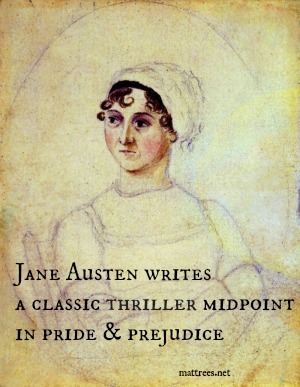 Jane Austen, thriller novelist
Jane Austen, thriller novelist
That doesn’t mean this only works for action heroes. That master of the thriller genre Jane Austen writes a classic Midpoint in Pride and Prejudice, when Mister D’Arcy proposes to Lizzie Bennett, only for her to reject him and tell him she hates all he stands for. After that, there’s no more dancing around each other, no coming together just because we like Lizzie and want her to marry a nice, rich guy. They have to act, or they aren’t going to end up as a couple.
Imagine your novel as a ship (at least, a ship contemporary to Miss Austen). The Midpoint is the mainmast, while the first and second plot points are the foremast up front and the mizzen at the back. Sure, there are ships with only two masts. But they don’t move as fast or as powerfully as a ship that’s built around a big, impressive, driving mainmast. Novels without a mainmast won’t move as quickly either, no matter how much wind the author supplies.
Midpoint story structure checklist
Here are a few ways to build a Midpoint that propels the hero into the second half of Act II with major momentum:
• Introduce a new character whose presence adds to the danger. In Gorky Park, Martin Cruz Smith gives his detective a new American pal who turns out to have a big impact on the denouement.
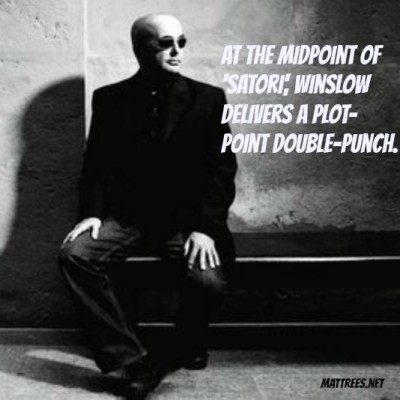
• Change the nature of the threat to the hero. Don Winslow does this in Satori and gives us a 180 degree twist. The reader spends the first half of the book thinking the hero has to carry out a hit for the CIA to buy his freedom from a US military jail. Instead, at the Midpoint, Winslow delivers a plot-point double punch. The hero kills his target — at great risk and with much tension. Only to have the CIA immediately try to kill him. For the rest of the book, he faces entirely unexpected risks as he figures out why he was double-crossed and goes after the men he believes did it.
• Introduce new information. Bridget Jones learns her boyfriend Mark is involved with another woman in Bridget Jones’s Diary. Jack Reacher finds reason to suspects the woman he’s involved with might be the killer in The Affair.
• Kill someone, to heighten the element of danger and provide a new impetus for the hero’s chase. I admit I like this one. I’ve used it in several of my novels. In Mozart’s Last Aria, the great composer’s sister is about to learn who killed him, only for her informant to be murdered during a performance of “The Magic Flute.” She’s back to square one, but now she’s sure there’s a murderer and that he’s onto her.
The show 24 tends to use the 180-degree Midpoint, too. Ever noticed how Jack Bauer fights one lot of bad guys for the first 12 hours, only to realize halfway through the season that the real bad guy is someone else entirely with a completely different plan?
What does a good Midpoint do?
A good Midpoint moves the plot faster. But best of all the reader experiences the same startling shift in focus as the hero. That creates tension and conflict. Which is a good thing in any plot. It’s also a way of saying to the reader, “Gotcha. Stay tuned, because I have more like that for Act III.”
Always try to make the Midpoint blow your readers away. Devote as much energy and ingenuity to it as you do to the set-up of the novel. Never make it so subtle it passes unnoticed. Think of The Da Vinci Code. The Midpoint of Dan Brown's novel is the discovery of what the Holy Grail really is. That’s pretty earth-shattering, even as Midpoints go.
Got a clock? Find the Midpoint
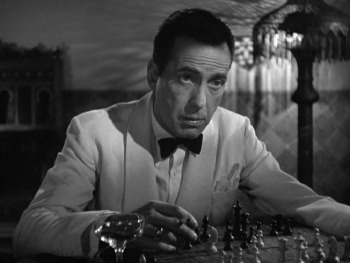 Screenwriters tend to be particularly precise about having their Midpoint land exactly 50 percent of the way through the movie. Midpoint-spotting in movies is, therefore, pretty easy (provided you own a clock) and can be very instructive as a plot exercise.
Screenwriters tend to be particularly precise about having their Midpoint land exactly 50 percent of the way through the movie. Midpoint-spotting in movies is, therefore, pretty easy (provided you own a clock) and can be very instructive as a plot exercise.
Check out Casablanca. At the exact middle of the movie, Rick harshes out at Ilsa. She runs off. He's left in the bar thinking about what a terrible man he has become. Which propels him to spend the second half of the movie redeeming himself.
Let me know if there's a great Midpoint that I haven't mentioned.

Get a FREE ebook of my crime stories.
By Matt Rees
When you plot a novel, pay special attention to the plot point called the Midpoint. Write a good Midpoint and you’ll propel your readers into the second half of your book with spectacular impetus.
What is the Midpoint? It falls directly in the center of the story structure (which may not be precisely in the middle of the book by page number, but probably is close.) The Midpoint is a scene that shifts the context and momentum of the story. It could be big or small. It could shift the story 45 degrees or 180. But it absolutely must push the story up a gear or two.
The main result of the Midpoint is a change in the hero. In the first half of Act II, the hero reacts to the situation around him. At the Midpoint, the hero becomes an action figure, powering through the second half of Act II in a more proactive mode.
 Jane Austen, thriller novelist
Jane Austen, thriller novelistThat doesn’t mean this only works for action heroes. That master of the thriller genre Jane Austen writes a classic Midpoint in Pride and Prejudice, when Mister D’Arcy proposes to Lizzie Bennett, only for her to reject him and tell him she hates all he stands for. After that, there’s no more dancing around each other, no coming together just because we like Lizzie and want her to marry a nice, rich guy. They have to act, or they aren’t going to end up as a couple.
Imagine your novel as a ship (at least, a ship contemporary to Miss Austen). The Midpoint is the mainmast, while the first and second plot points are the foremast up front and the mizzen at the back. Sure, there are ships with only two masts. But they don’t move as fast or as powerfully as a ship that’s built around a big, impressive, driving mainmast. Novels without a mainmast won’t move as quickly either, no matter how much wind the author supplies.
Midpoint story structure checklist
Here are a few ways to build a Midpoint that propels the hero into the second half of Act II with major momentum:
• Introduce a new character whose presence adds to the danger. In Gorky Park, Martin Cruz Smith gives his detective a new American pal who turns out to have a big impact on the denouement.

• Change the nature of the threat to the hero. Don Winslow does this in Satori and gives us a 180 degree twist. The reader spends the first half of the book thinking the hero has to carry out a hit for the CIA to buy his freedom from a US military jail. Instead, at the Midpoint, Winslow delivers a plot-point double punch. The hero kills his target — at great risk and with much tension. Only to have the CIA immediately try to kill him. For the rest of the book, he faces entirely unexpected risks as he figures out why he was double-crossed and goes after the men he believes did it.
• Introduce new information. Bridget Jones learns her boyfriend Mark is involved with another woman in Bridget Jones’s Diary. Jack Reacher finds reason to suspects the woman he’s involved with might be the killer in The Affair.
• Kill someone, to heighten the element of danger and provide a new impetus for the hero’s chase. I admit I like this one. I’ve used it in several of my novels. In Mozart’s Last Aria, the great composer’s sister is about to learn who killed him, only for her informant to be murdered during a performance of “The Magic Flute.” She’s back to square one, but now she’s sure there’s a murderer and that he’s onto her.
The show 24 tends to use the 180-degree Midpoint, too. Ever noticed how Jack Bauer fights one lot of bad guys for the first 12 hours, only to realize halfway through the season that the real bad guy is someone else entirely with a completely different plan?
What does a good Midpoint do?
A good Midpoint moves the plot faster. But best of all the reader experiences the same startling shift in focus as the hero. That creates tension and conflict. Which is a good thing in any plot. It’s also a way of saying to the reader, “Gotcha. Stay tuned, because I have more like that for Act III.”
Always try to make the Midpoint blow your readers away. Devote as much energy and ingenuity to it as you do to the set-up of the novel. Never make it so subtle it passes unnoticed. Think of The Da Vinci Code. The Midpoint of Dan Brown's novel is the discovery of what the Holy Grail really is. That’s pretty earth-shattering, even as Midpoints go.
Got a clock? Find the Midpoint
 Screenwriters tend to be particularly precise about having their Midpoint land exactly 50 percent of the way through the movie. Midpoint-spotting in movies is, therefore, pretty easy (provided you own a clock) and can be very instructive as a plot exercise.
Screenwriters tend to be particularly precise about having their Midpoint land exactly 50 percent of the way through the movie. Midpoint-spotting in movies is, therefore, pretty easy (provided you own a clock) and can be very instructive as a plot exercise.Check out Casablanca. At the exact middle of the movie, Rick harshes out at Ilsa. She runs off. He's left in the bar thinking about what a terrible man he has become. Which propels him to spend the second half of the movie redeeming himself.
Let me know if there's a great Midpoint that I haven't mentioned.

Get a FREE ebook of my crime stories.
Published on April 09, 2014 01:09
•
Tags:
casablanca, crime-fiction, historical-fiction, how-to-write, jane-austen, midpoint, story-structure, thrillers, writing-tips
April 5, 2014
Dead Every Day: Pt 11 of the exclusive podcast thriller
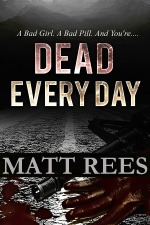 The eleventh installment of a FREE thriller in serial form. Matt reads his psychological thriller DEAD EVERY DAY. Ellis Callan is a history professor stricken by post-traumatic stress disorder from his time as a Marine in Iraq. He’s caught up in a mystery surrounding the murders of three women around him. In this installment Callan takes refuge with his dead sister's boss, a psychiatrist. The shrink suggests Callan might be schizophrenic. Then someone comes to get him...A bad girl, a bad pill, and you’re Dead Every Day. Get Matt’s FREE ebook too.
The eleventh installment of a FREE thriller in serial form. Matt reads his psychological thriller DEAD EVERY DAY. Ellis Callan is a history professor stricken by post-traumatic stress disorder from his time as a Marine in Iraq. He’s caught up in a mystery surrounding the murders of three women around him. In this installment Callan takes refuge with his dead sister's boss, a psychiatrist. The shrink suggests Callan might be schizophrenic. Then someone comes to get him...A bad girl, a bad pill, and you’re Dead Every Day. Get Matt’s FREE ebook too.Get the Podcast: Download the MP3
Subscribe on iTunes Listen on Stitcher.

Get a FREE ebook of my crime stories.
Published on April 05, 2014 23:48
•
Tags:
crime-fiction, dead-every-day, free-book, free-novel, free-thriller, podcast-novel, podcast-thriller, readings, thrillers, writing
April 3, 2014
Write a thriller: Bad experiences make you a better writer
Remember how it feels to feel bad, endure it positively, and write it down
When something bad happens to a writer, the experience is great material for something bad happening to your characters. Remember the feelings, the way your mind processed it and the sensations of tension in your heart, your veins. Get it all down on paper and save it for when you need to give those emotions to a character. The experience can teach you how to be a better person and how to be a better writer.

This ought to make you feel better at those low times. Because you know it’ll come in useful.
British writer Alan Bennett is known for his mordant wit, for making dour experiences seem somehow wistful and alive. “For a writer, nothing is ever quite as bad as it is for other people,” Bennett writes, “because, however dreadful, it may be of use.”
Negative experiences can change you as a person -- for the better, if you approach them positively.
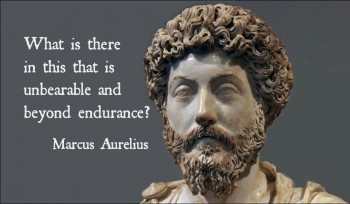
The Roman emperor and stoic philosopher Marcus Aurelius wrote that a negative experience should be recognized for what it is: something that has happened, and nothing more. Our response is far more important than the event itself. "What is there in this that is unbearable and beyond endurance?" he wrote. The answer is: Nothing at all.
With that attitude you can take the negative experience and use it for your fiction, while also growing spiritually with a sense of acceptance.

Read more Write a thriller posts with tips and analysis from Stephen King, Raymond Chandler, Dan Brown, and many other great novelists.
Get a FREE ebook of my crime stories.
When something bad happens to a writer, the experience is great material for something bad happening to your characters. Remember the feelings, the way your mind processed it and the sensations of tension in your heart, your veins. Get it all down on paper and save it for when you need to give those emotions to a character. The experience can teach you how to be a better person and how to be a better writer.

This ought to make you feel better at those low times. Because you know it’ll come in useful.
British writer Alan Bennett is known for his mordant wit, for making dour experiences seem somehow wistful and alive. “For a writer, nothing is ever quite as bad as it is for other people,” Bennett writes, “because, however dreadful, it may be of use.”
Negative experiences can change you as a person -- for the better, if you approach them positively.

The Roman emperor and stoic philosopher Marcus Aurelius wrote that a negative experience should be recognized for what it is: something that has happened, and nothing more. Our response is far more important than the event itself. "What is there in this that is unbearable and beyond endurance?" he wrote. The answer is: Nothing at all.
With that attitude you can take the negative experience and use it for your fiction, while also growing spiritually with a sense of acceptance.

Read more Write a thriller posts with tips and analysis from Stephen King, Raymond Chandler, Dan Brown, and many other great novelists.
Get a FREE ebook of my crime stories.
Published on April 03, 2014 23:07
•
Tags:
alan-bennett, crime-fiction, how-to-write, marcus-aurelius, thrillers, write-a-thriller, writing-tips
April 2, 2014
Dead Every Day: Pt 10 of the exclusive podcast thriller
 The tenth installment of a FREE thriller in serial form. Award-winning crime novelist Matt Rees reads his psychological thriller DEAD EVERY DAY. Ellis Callan is a history professor stricken by post-traumatic stress disorder from his time as a Marine in Iraq. He’s caught up in a mystery surrounding the murders of three women around him. In this installment Callan finds himself pursued by two mysterious men and learns that his ex-girlfriend was working on a disturbing news story when she was murdered. A bad girl, a bad pill, and you’re Dead Every Day. Get Matt’s FREE ebook too.
The tenth installment of a FREE thriller in serial form. Award-winning crime novelist Matt Rees reads his psychological thriller DEAD EVERY DAY. Ellis Callan is a history professor stricken by post-traumatic stress disorder from his time as a Marine in Iraq. He’s caught up in a mystery surrounding the murders of three women around him. In this installment Callan finds himself pursued by two mysterious men and learns that his ex-girlfriend was working on a disturbing news story when she was murdered. A bad girl, a bad pill, and you’re Dead Every Day. Get Matt’s FREE ebook too.Get the Podcast: Download the MP3
Subscribe on iTunes Listen on Stitcher.

Get a FREE ebook of my crime stories.
Related articles across the web
 How to Listen to a Podcast (on your computer or phone)
How to Listen to a Podcast (on your computer or phone)  What to Read on the Subway This Week: 4/29
What to Read on the Subway This Week: 4/29 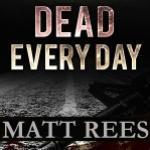 Dead Every Day: Part 9 of Matt's Exclusive Podcast Thriller
Dead Every Day: Part 9 of Matt's Exclusive Podcast Thriller  An Hour to Kill with Doc Bonn Welcomes R. Barri Flowers
An Hour to Kill with Doc Bonn Welcomes R. Barri Flowers
Published on April 02, 2014 03:52
•
Tags:
crime-fiction, dead-every-day, free-book, free-novel, free-thriller, podcast-novel, podcast-thriller, readings, thrillers, writing
March 31, 2014
11 thriller writers worth following on Twitter
Thriller writers who use Twitter as more than a place for press releases
Twitter is about connecting. Some crime novelists, however, clearly don’t write their own tweets. Other thriller writers openly declare that their account is managed by their “team.” I say humbug to this one-way-street view of Twitter. This list includes those who’re very much engaged and worth following:

Connect with Harlan Coben
Witticisms that seem to come straight out of the mouths of his narrators. News about appearances. And alerts when he’s “chillaxing with [his] homies.” Tweet this.

Connect with Jodi Picoult
Where are the people of color in children’s books? she asks, and other important (“impt”) questions. Plus, there’s no pizza in the fridge for dinner! It’s personal, which is what Twitter is supposed to be. Tweet this.

Connect with Jason Pinter
Publisher and thriller writer who (as you can see) doesn’t conform to the prevalent view among published authors that epublishing was invented by Hitler. Tweet this.

Connect with Joe Finder
A NYT best-selling author who’s active with writing tips, as well as more general stuff in his and others lives. Tweet this.

Connect with James Patterson
Chats with his characters, who are also “on” Twitter, and showcases his charitable interests. Oh, and of course, let’s you know that he publishes a book almost as often as the rest of us tweet. Tweet this.
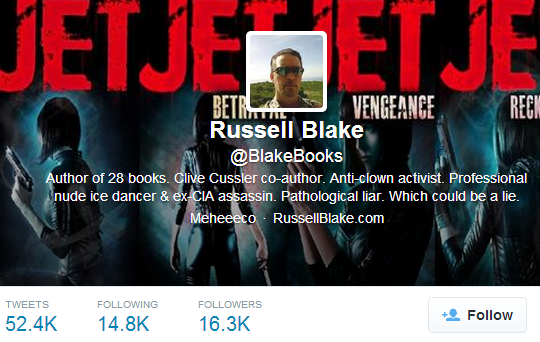
Connect with Russell Blake
Retweets a lot of useful links from different media, because as the King of Indie Authors he’s in contact with cutting edge types. Also, as you see, he's not slow to tweet. 52,000 tweets and counting. Tweet this.

Connect with Claude Bouchard
He did what social media experts say not to do. He followed 500 people a day and then deleted those who didn’t follow him back. He has almost half a million followers. If only a small percentage actually buy his books…Get it? Tweet this.

Connect with Lisa Scottoline
Likes to recommend what she’s reading. Very personable. (Yes, you can be personable in 140 characters.) Sometimes even asks people for advice. Lots of @ chat. Tweet this.

Connect with David Baldacci
If you ever forget to read to your kids, @davidbaldacci is there to remind you to do so. Rather frequently. And that doesn’t hurt. Neither should you miss out on news about his novels -- or this hat. Tweet this.

Connect with Don Winslow
Now that’s not a tweet by “his team." The eclectic interests in movies, historical photos, and politics of the author of “Savages” and (my fave) “Satori”. Tweet this.

Connect with Matt Rees
Gives away a FREE ebook and a FREE podcast thriller for those moments when you aren't on Twitter. Writes cool and useful lists like this one. Tweet this.

Related articles across the web
 Ridgewood author Harlan Coben visits military troops for USO tour
Ridgewood author Harlan Coben visits military troops for USO tour
 Writing crime fiction: Do you plot or not?
Writing crime fiction: Do you plot or not?
 Write a thriller: Know the plot's destination before you start
Write a thriller: Know the plot's destination before you start
 Master of Psychological Thrillers - Alfred Hitchcock
Master of Psychological Thrillers - Alfred Hitchcock
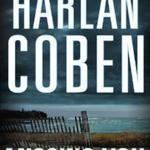 Review: Missing You by Harlan Coben
Review: Missing You by Harlan Coben
Twitter is about connecting. Some crime novelists, however, clearly don’t write their own tweets. Other thriller writers openly declare that their account is managed by their “team.” I say humbug to this one-way-street view of Twitter. This list includes those who’re very much engaged and worth following:

Connect with Harlan Coben
Witticisms that seem to come straight out of the mouths of his narrators. News about appearances. And alerts when he’s “chillaxing with [his] homies.” Tweet this.

Connect with Jodi Picoult
Where are the people of color in children’s books? she asks, and other important (“impt”) questions. Plus, there’s no pizza in the fridge for dinner! It’s personal, which is what Twitter is supposed to be. Tweet this.

Connect with Jason Pinter
Publisher and thriller writer who (as you can see) doesn’t conform to the prevalent view among published authors that epublishing was invented by Hitler. Tweet this.

Connect with Joe Finder
A NYT best-selling author who’s active with writing tips, as well as more general stuff in his and others lives. Tweet this.

Connect with James Patterson
Chats with his characters, who are also “on” Twitter, and showcases his charitable interests. Oh, and of course, let’s you know that he publishes a book almost as often as the rest of us tweet. Tweet this.

Connect with Russell Blake
Retweets a lot of useful links from different media, because as the King of Indie Authors he’s in contact with cutting edge types. Also, as you see, he's not slow to tweet. 52,000 tweets and counting. Tweet this.

Connect with Claude Bouchard
He did what social media experts say not to do. He followed 500 people a day and then deleted those who didn’t follow him back. He has almost half a million followers. If only a small percentage actually buy his books…Get it? Tweet this.

Connect with Lisa Scottoline
Likes to recommend what she’s reading. Very personable. (Yes, you can be personable in 140 characters.) Sometimes even asks people for advice. Lots of @ chat. Tweet this.

Connect with David Baldacci
If you ever forget to read to your kids, @davidbaldacci is there to remind you to do so. Rather frequently. And that doesn’t hurt. Neither should you miss out on news about his novels -- or this hat. Tweet this.

Connect with Don Winslow
Now that’s not a tweet by “his team." The eclectic interests in movies, historical photos, and politics of the author of “Savages” and (my fave) “Satori”. Tweet this.

Connect with Matt Rees
Gives away a FREE ebook and a FREE podcast thriller for those moments when you aren't on Twitter. Writes cool and useful lists like this one. Tweet this.

Related articles across the web
 Ridgewood author Harlan Coben visits military troops for USO tour
Ridgewood author Harlan Coben visits military troops for USO tour  Writing crime fiction: Do you plot or not?
Writing crime fiction: Do you plot or not?  Write a thriller: Know the plot's destination before you start
Write a thriller: Know the plot's destination before you start  Master of Psychological Thrillers - Alfred Hitchcock
Master of Psychological Thrillers - Alfred Hitchcock  Review: Missing You by Harlan Coben
Review: Missing You by Harlan Coben
Published on March 31, 2014 23:30
•
Tags:
crime-fiction, lists, thrillers, twitter, writers
If you read only one Robert Harris thriller, read Archangel
The story of a Stalin bloodline is truly chilling
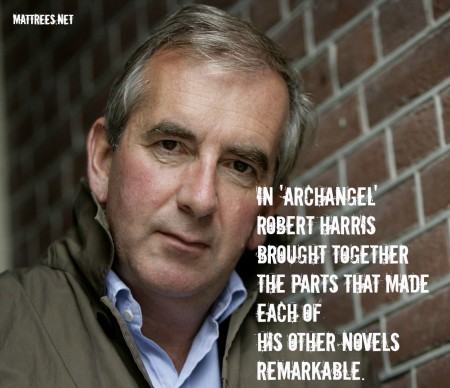 What? Not Enigma? Not The Ghost? Right, not Enigma. Definitely not The Ghost. In Archangel, Robert Harris brought together the parts that have made each of his other novels in some way remarkable. There’s a historical What-if mystery, an erudite figure at the center of the book, and a chilling final section filled with tension.
What? Not Enigma? Not The Ghost? Right, not Enigma. Definitely not The Ghost. In Archangel, Robert Harris brought together the parts that have made each of his other novels in some way remarkable. There’s a historical What-if mystery, an erudite figure at the center of the book, and a chilling final section filled with tension.
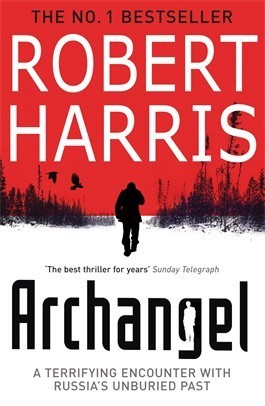 A British historian travels to Russia for a conference. There he learns of the existence of Stalin’s secret diary. He tracks it to the northern city of Archangel, where he makes a terrifying discovery.
A British historian travels to Russia for a conference. There he learns of the existence of Stalin’s secret diary. He tracks it to the northern city of Archangel, where he makes a terrifying discovery.
Without giving the end away, I must tell you that the conclusion of the novel is particularly poignant in these days of Ukrainian troubles and a new kind of Stalin in the Kremlin yearning for the good old days of the Soviet Union. Even more reason to read this one.

Read more If you read only one... To discover the indispensable book by each big thriller writer.
Get a FREE ebook of my crime stories.
 What? Not Enigma? Not The Ghost? Right, not Enigma. Definitely not The Ghost. In Archangel, Robert Harris brought together the parts that have made each of his other novels in some way remarkable. There’s a historical What-if mystery, an erudite figure at the center of the book, and a chilling final section filled with tension.
What? Not Enigma? Not The Ghost? Right, not Enigma. Definitely not The Ghost. In Archangel, Robert Harris brought together the parts that have made each of his other novels in some way remarkable. There’s a historical What-if mystery, an erudite figure at the center of the book, and a chilling final section filled with tension. A British historian travels to Russia for a conference. There he learns of the existence of Stalin’s secret diary. He tracks it to the northern city of Archangel, where he makes a terrifying discovery.
A British historian travels to Russia for a conference. There he learns of the existence of Stalin’s secret diary. He tracks it to the northern city of Archangel, where he makes a terrifying discovery.Without giving the end away, I must tell you that the conclusion of the novel is particularly poignant in these days of Ukrainian troubles and a new kind of Stalin in the Kremlin yearning for the good old days of the Soviet Union. Even more reason to read this one.

Read more If you read only one... To discover the indispensable book by each big thriller writer.
Get a FREE ebook of my crime stories.
Published on March 31, 2014 01:25
•
Tags:
archangel, crime-fiction, crimea, robert-harris, soviet-union, thrillers, ukraine, writing
March 29, 2014
Dead Every Day: Pt 9 of the exclusive podcast thriller
 The ninth installment of a FREE crime thriller in serial form. Matt reads his psychological thriller DEAD EVERY DAY. Ellis Callan is a history professor stricken by post-traumatic stress disorder from his time as a Marine in Iraq. He’s caught up in a mystery surrounding the murders of three women around him. In this installment Callan becomes dependent on the Tranquillax drug to fight off his memories of Iraq. He starts to think he's being followed. He wonders if he can trust his sister's former assistant, even as he sleeps with her. A bad girl, a bad pill, and you’re Dead Every Day. Get Matt’s FREE ebook too.
The ninth installment of a FREE crime thriller in serial form. Matt reads his psychological thriller DEAD EVERY DAY. Ellis Callan is a history professor stricken by post-traumatic stress disorder from his time as a Marine in Iraq. He’s caught up in a mystery surrounding the murders of three women around him. In this installment Callan becomes dependent on the Tranquillax drug to fight off his memories of Iraq. He starts to think he's being followed. He wonders if he can trust his sister's former assistant, even as he sleeps with her. A bad girl, a bad pill, and you’re Dead Every Day. Get Matt’s FREE ebook too.Get the Podcast: Download the MP3
Subscribe on iTunes Listen on Stitcher.

Published on March 29, 2014 23:47
•
Tags:
crime-fiction, dead-every-day, free-book, free-novel, free-thriller, podcast-novel, podcast-thriller, readings, thrillers, writing



